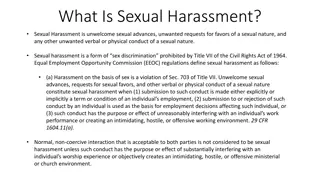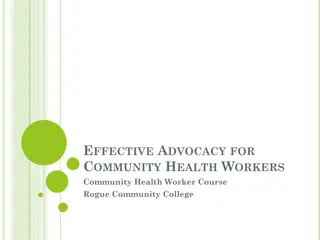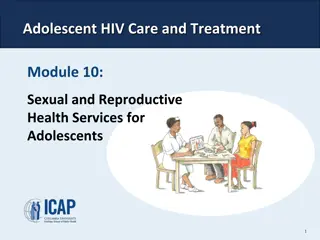Advocacy for Sexual and Reproductive Health and Rights (SRHR): Strategies and Importance
Advocacy for SRHR involves leveraging strategies to achieve social, economic, political, cultural, legal, and civil change, aiming to empower rights-holders, hold duty-bearers accountable, and catalyze systemic change. It is essential for addressing stigma, driving accountability in SRH information and services delivery, uncovering root causes of inequality, and strengthening civil society capacity. Strategies like advancing rights, mobilizing for progressive laws, and creating enabling environments are employed to promote SRHR. Examples include strategic litigation, artivism, and empowering rights-holders.
Download Presentation

Please find below an Image/Link to download the presentation.
The content on the website is provided AS IS for your information and personal use only. It may not be sold, licensed, or shared on other websites without obtaining consent from the author.If you encounter any issues during the download, it is possible that the publisher has removed the file from their server.
You are allowed to download the files provided on this website for personal or commercial use, subject to the condition that they are used lawfully. All files are the property of their respective owners.
The content on the website is provided AS IS for your information and personal use only. It may not be sold, licensed, or shared on other websites without obtaining consent from the author.
E N D
Presentation Transcript
What is advocacy for SRHR? SRHR Encompasses the full range of rights related to sexuality, gender, reproduction, including sexual and reproductive health. Our ability to make free and informed decisions about our sexual and reproductive lives free from violence, coercion and discrimination. Advocacy Collection of strategies leveraged to achieve social, economic, political, cultural, legal and civil change. To hold duty-bearers accountable for their obligations To empower rights-holders to claim their rights, to catalyze systemic change. Advocacy s focus on accountability is what differentiates SRHR advocacy from public engagement (information/education/communication activities).
Advocacy for SRHR is important because: To tackle stigma, lack of political will or direct attacks on SRHR. To drive accountability for the delivery of SRH information and services, in line with human rights obligations, and create enabling law and policy environments. To uncover and address root causes of inequality in relation to SRHR. To strengthen capacity of civil society, to contribute to movement building and to deconstruct artificial silos across SRHR issues.
Advocacy strategies can be used to: Advance rights through seeking to eliminate harmful and discriminatory laws and policies; Mobilize towards the enactment of progressive, rights-based laws and policies; Hold governments accountable to their human rights obligations as duty-bearers; Create enabling environments for the realization of rights.
Capacity building Intersectional movement building Strategic litigation Examples of advocacy strategies employed by SRHR advocates /activists Engaging decision-makers Artivism Empowering rights-holders to know their rights Building evidence based Leveraging accountability mechanisms Direct investment in advocates























